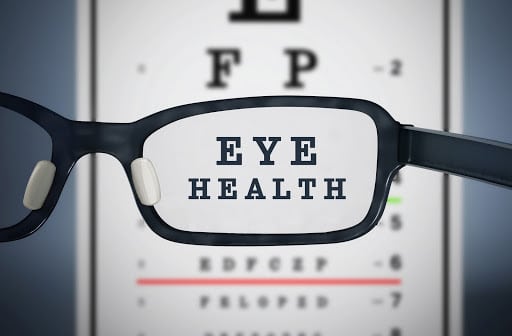May is “Vision Month” so it is appropriate to shine a light on vision benefits. Typical benefits plans have limited coverage for eye health and the coverage has not changed for decades. In fact, spending on vision care in Canada accounts for only 5.9% of all private health care spending. Meanwhile, the Canadian Association of Optometrists would like to see plans updated and modernized to include the new technologies and diagnostic services that have developed in recent years.
Beyond the Eye Chart
Eye exams now go way beyond reading eye charts and getting a pair of glasses. Comprehensive eye exams include visual field testing and retinal imaging to help detect, treat, and monitor for eye disease. This level of eye examination can help the patient avoid more expensive treatments, eye surgeries, and even blindness in the future. As the population and the workforce in Canada ages, eye health becomes a larger issue as problems such as cataracts and macular degeneration occur more often in people over 50. In addition, with rising cases of diabetes (which can impact eyesight), and the increased daily time employees spend in front of computer screens, vision impairment is also increasing.
Why has eye health been overlooked?
In a national study of vision care benefits, the Canadian Association of Optometrists (CAO) concluded that eye health and vision care has been significantly underfunded for decades. Employers have focused on the rising benefits costs of drugs, dental, disability and mental health. When compared to other extended health benefits, vision care has been a low priority. In the past 5 years, 74% of private vision care expenditures were paid for out of pocket by Canadians versus 37% for drugs and 44% for dental care. Unfortunately, many Canadians may forego regular preventative eye examinations which place them at higher risk of hastening their vision loss.
The majority of Group Benefit Plans in Canada, when the employer chooses to add vision, will provide $250.00 of vision care every 24 months and $125.00 for Eye Exams, but at a steep cost to the Employer. Some Individual Stand-Alone plans will include Vision coverage, but in a very limited fashion, such as a leading Insurer who only provides $250 for Vision every 2 years, and only $50 for an eye exam every 2 years. Again, the cost to add vision to a stand-alone plan is prohibitive causing most people to decide to do without.
Meanwhile, high quality progressive eye glass lenses can range between $500 to $800, and that doesn’t include the frames. Also in Canada, a comprehensive eye exam can cost somewhere between $80 to $300, depending on where in Canada and what testing is included.
Updating Vision Care Benefits
For employers, understanding the changes in eye care and the demographics can lead to better benefits plans. Benefits managers need to become aware of the important clinical and cost-effective advancements in optometric modalities, diagnostics, treatments, and interventions which can preserve vision and delay or prevent earlier diagnose of other impairments. In addition, the CAO recommends that plan managers develop vision care norms that separate vision care into the following categories:
• Comprehensive routine examinations
• Diagnostics and interventions
• Frames and lenses
• Additional medically indicated benefits (e.g., more frequent exams and corrective lenses updates, additional diagnostics, and interventions) for patients with certain risk factors or conditions (e.g., stage of life, comorbidities, chronic disease etc.)
The CAO also suggests that plans move away from 24 month benefit periods as this may lead to unnecessarily high claims for frames and lenses if employees have a “use it or lose it” approach to those benefits. Eye examinations need to be more frequent than every two years, and funded properly to include the cost-effective advanced testing now available. As with other specific areas of benefits plans, increasing expenditures for vision care should be seen as preventative of higher costs to the employer down the road should vision care benefits remain inadequate now. Reducing high out-of-pocket expenses for employees is not just a benefit to the employees, but to the employer as well.
At Health Risk Services, we closely follow industry news to see how changes in the workplace and the wider culture are affecting Employers and Employees. We help our clients find the right benefits solutions for their workforce while maintaining sustainability and retention of their valued employees. We would like you to know more about how Health Risk Services can assist you with a 2022 plan to address changes and trends, so please schedule a Complimentary Consultation with us.
At Health Risk Services we will Empathize, Educate, and Empower you and your team in 2021!
To schedule your Complimentary Consultation with Health Risk Services, please call 403-236-9430 OR email: [email protected]













